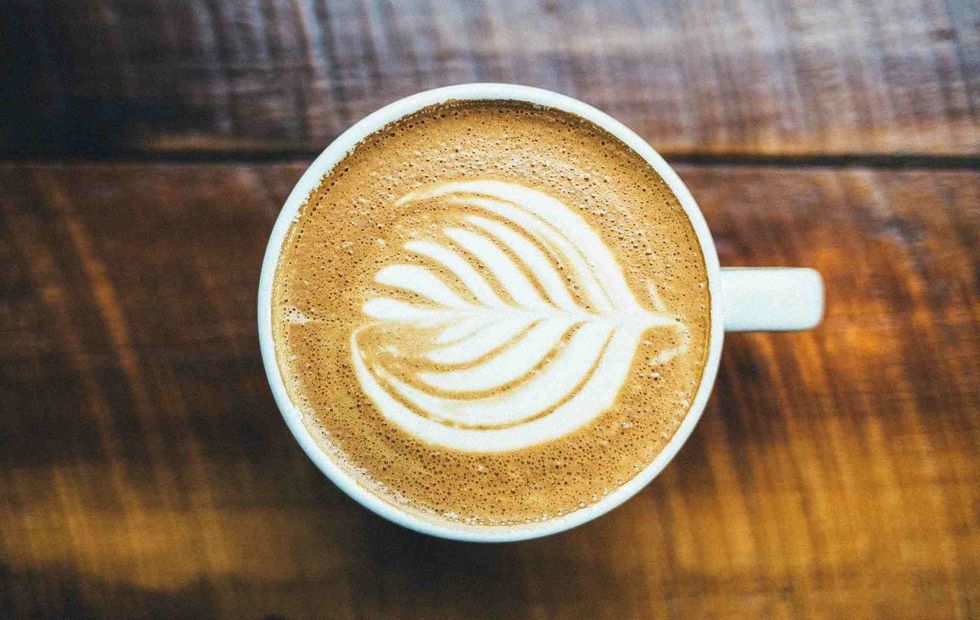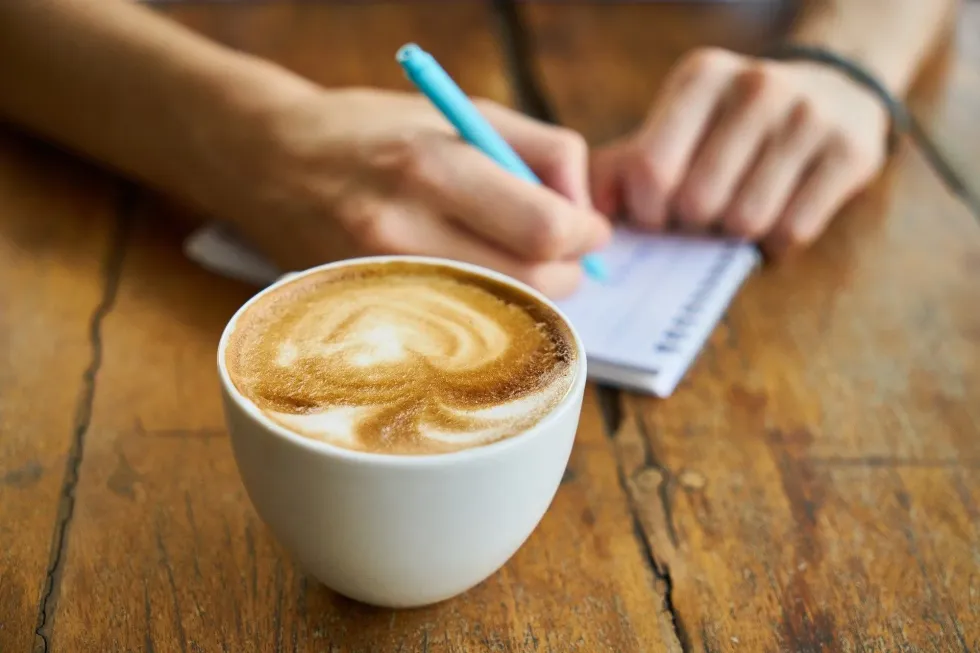How Is Coffee Made? Amazing Facts For Coffee Lovers!

For many, mornings are unimaginable without a hot cup of coffee.
Nothing in this whole wide world can lift your mood better than a steaming cup of coffee. Caffeine, some light music, and a novel - the perfect evening retreat!
Every time is the best time for coffee. It is the perfect beverage for every mood.
When you have a tiring workday, coffee comes to your rescue. If you have to burn the midnight oil and study all night for the exams then this beverage is your best friend.
Cold coffee for those sultry days and a hot cup for a wintry climate - nothing can be better than this freshly brewed drink. If you think that coffee beans are real beans then it's time for a quick fact check. When we say coffee beans, we actually refer to the seeds of coffee cherries.
The name is used because the size and shape of the seed resemble that of a bean. So, you can even grow your own coffee cherry tree in the garden.
Nevertheless, the journey from bean to cup is pretty long and arduous. Coffee trees originated in Ethiopia, but they gradually spread through Southeast Asia and America.
Currently, Brazil, Vietnam, and Colombia are the largest producers of the amazing coffee bean. Coffee trees are best suited to tropical climates. However, regardless of the climate, they can be planted and harvested indoors.
Coffee beans are primarily extracted from two plants: arabica (Coffea arabica) and robusta (Coffea robusta). Here are some uncommon facts that will surely rejuvenate your mind and make your next cup of brew all the more interesting.
If you enjoy the content then also read through these engaging facts about how is cheese made and how bread is made.
How is instant coffee made?
Coffee is one of the easiest beverages to make. However, before your coffee reaches you, it goes through an intricate production and distribution process which makes for a fascinating read. After the elaborate coffee production process, roasting, grinding, grading, and packaging processes are completed, distribution of the coffee begins.
Once the beans are harvested, the next step involves hulling, polishing, and finally grading. Hulling is the removal of dried skin or husk of the coffee bean. Polishing ensures that there's no excess skin.
Grading is the quality-check process where the beans are graded according to their weight, size, and polish. The spoiled beans are discarded. The last step involves tasting. Visual, olfactory, as well as gustatory tests are conducted by tasters (called cuppers).
Elements like acidity levels and aftertaste are considered in this process. Did you know that a professional cupper can taste hundreds of coffee samples? They are adept at tasting and distinguishing the subtle differences in each sample of coffee!
This is not all. The green coffee beans are now ready to be roasted.
The roasting process (called pyrolysis) is essential as it unlocks the aroma and flavor and offers a rich brown color to the beans that are available in stores. This coffee roasting process is carried out at a temperature of approximately 440 F (226.6 C).
However, while roasting these green coffee beans, they must be turned occasionally throughout the process to ensure they don't burn.
The beans start darkening from yellow to light brown to shiny dark brown. It takes years of expertise and knowledge to make faultless judgments about the internal temperature of each roasted bean. Sometimes, roasting is accompanied by grinding before the final product is sent out for packaging.
The distribution process usually includes producers, wholesalers, retailers, and consumers. Larger roasters prefer the wholesale channel while also supplying to high-end restaurants and cafes.
Following all this, your coffee will reach your doorstep for you to make instant coffee. Instant coffee is made with a handful of ingredients - hot water, ground coffee, milk, and sugar to taste.
If you prefer strong black coffee then you can avoid milk. For one serving you just need to add a teaspoon of coffee powder, some milk, and the required amount of sugar in hot water.
This is to be followed by stirring and the energizing beverage is ready to be tasted. You can also throw in some ice and make an instant cold coffee.
How is decaffeinated coffee made?
Caffeine is quite common in beverages, but excessive consumption of caffeine can come with certain side effects such as insomnia, anxiety, high blood pressure, headaches, and migraine. However, the modern health-conscious generation prefers to do away with the ill effects of caffeine.
Don't let the term 'decaf' fool you. Any coffee is bound to contain at least some caffeine.
However, the proportions might vary. In 1905, the first decaffeination process was discovered by Ludwig Roselius, a German coffee trader. Decaffeinated coffee is made by swelling the coffee bean in steam or water before roasting it.
About 97% of the caffeine is eliminated by immersing the beans firstly in the water and then either in activated carbon or ethyl acetate or methylene chloride solvent.
If you don't want too much caffeine in your diet then you can go for decaf coffee, as it offers a similar taste to caffeinated coffee beans but has less caffeine in it.
How is flavored coffee made?
Did you know that traditionally coffee's flavors came from adding flavoring oils after roasting the beans? Flavoring is normally added to coffee to minimize the natural aroma of the drink. If you're sick of the smell of roasted beans then follow these tricks to get the desired taste and smell.
Spices have to be the first choice. Cardamom, nutmeg, cloves, and cinnamon are popularly used to enhance the flavor of coffee.
You can directly add these spices while brewing the liquid or you can even store them with the beans so that the flavors get infused. Another way to add flavor is simply by using coffee oils.
These taste-enhancing magical potions are readily available in stores. However, make sure that the beans are soaked in the oils for some time, as they acquire a stronger flavor when left soaked for longer periods.

How is Turkish coffee made?
Another variation of coffee that's easy to make is Turkish coffee. It is renowned for its unique taste. If you have your old friends dropping by this evening then the customary Turkish coffee is the best way to express your love. Here are some simple steps to prepare this delightful drink.
Firstly, the coffee particles must be extremely fine-grained. Sugar preferences play a significant role in the preparation of this variation so feel free to ask your guests how much sugar they prefer before you brew this traditional drink.
You will need a wide-bottomed copper pot called a cezve. The ingredients are filtered water, ground coffee, granulated sugar, and Turkish coffee cups (if possible). Generally, cold water is used.
The first stage involves adding two servings' worth of cold water into the cezve along with ultra-fine coffee and granulated sugar. The cezve is then placed on the cooktop and the mixture is heated on medium flame until it starts rising and foaming.
At this stage, the cezve is removed to prevent boiling. The foam is then skimmed out and transferred to the serving cups.
This process is repeated after replacing the cezve. However, this time, when the liquid reaches the brim and starts foaming, the coffee is slowly poured into each of the serving cups. Bear in mind that there is no room for stirring the liquid during or even after brewing.
Preferably, Turkish coffee must not be consumed over a serving since it is richer, denser, and thicker when compared with filtered coffee. When serving, you can add some Turkish sweets or chocolates on the side.
How is French vanilla coffee made?
Apart from instant coffee and Turkish coffee, how about vanilla and coffee - sounds delectable, doesn't it? If you want to treat yourself to something different from regular coffees, go for French vanilla coffee.
Let's take a look into the method of preparing French vanilla coffee. It takes only five minutes and four ingredients to make a refreshing cup of this coffee.
All you need is 3/4 cup ground coffee, 1/4 cup brown sugar, six cups of water, and two teaspoons of vanilla extract. Start off by adding sugar and coffee to the brew basket and pour the vanilla essence into the coffee maker's pot. Now, simply add some water and start brewing.
You can experiment with the recipe by spreading some whipped cream for a creamy texture. If you're in a hurry then this one can be your savior of the day!
Did You Know...
Many enjoy the lingering aroma of coffee prepared from freshly roasted coffee beans. But hardly any of us have the time to take a break, relax, and leisurely think where these beans come from or about the process of producing coffee.
As mentioned earlier, a coffee bean is actually the bean-like seed of coffee cherry or cascara. Coffee cherries are procured from coffee plants.
A tall, bushy coffee tree grows up to a height of 30–40 ft (9–12 m). The coffee plants mature and start blossoming with white flowers within a year, and by four to five years they start bearing fruits. However, ripe red fruits can only be harvested for commercial use ideally after 10 years.
Harvesting these ripe fruits requires a lot of intensive labor, although in some places the effort has been eased with the introduction of modern equipment and machines. Harvesting is done either by strip picking or selective picking.
After harvesting, the beans usually go through one of two processing methods - the dry and wet methods. In the first method, the cascaras are spread out to dry and roasted under the sun.
Throughout the day, the fruits have to be turned and raked continuously so that they don't get damaged. During the night, they're covered up to save them from the rain. This is done to preserve the fruit's quality.
The second process involves extracting the fruit pulp after harvesting. After the pulp has been discarded, only the thin parchment layer remains on the coffee beans. These beans are then dried under the bright sun.
The world has left no stone unturned to explore the uncountable benefits of this caffeinated drink. More than 20 different types of coffee have been discovered. Let's find out the types.
Recently, dalgona coffee has been trending on social platforms. Black coffee, espresso, latte, decaf, cappuccino, Americano, café au lait, macchiato, Irish coffee, mocha latte, flat white, Red Eye - you name it! Cafés and restaurants have experimented with coffee in every possible manner, so there's no end to your coffee choices.
You can also try out the iced latte, frappe, nitro cold brew, or simply an iced coffee. However, roasting and grinding play crucial roles in releasing the aroma and desired flavors.
This is why filter coffee is mostly prepared with coarsely ground beans, while espresso requires finely ground beans. Among all the variations, arabica beans are the most famous for preparing coffee.
This coffee has a comparatively sweeter taste than robusta, which is known for its strong flavor. The arabica bean is of better quality, and so is more expensive than robusta.
As you're already aware by now, there are two main types of coffee beans: arabica and robusta. However, you might be astonished to know that civet coffee, or kopi luwak, is among the most expensive coffee, costing $600 a kilogram!
Do you know that a variation of coffee is prepared from poop? Grossed out?
Hold your horses before arriving at any judgment. This Indonesian-style coffee, kopi luwak, has high demand all over the world!
Kopi luwak is prepared from coffee beans extracted from the poop of the palm civet. When these adorable civets gobble up coffee cherries, fermentation of the beans takes place while passing through the digestive tract, giving the beans a distinct aroma, flavor, and smooth texture.
This might sound eccentric, but coffee lovers from around the world have exhibited an enormous craze for this variation, classifying it among the most expensive coffees. In fact, Black Ivory Coffee Company Ltd produced coffee from the dung of elephants.
Just like the civets, the digestive enzymes of the huge beast help break down the arabica coffee's protein and fermentation of the beans. It is available at an exorbitant cost of $2,000 a kilogram.
Looking for tips on how to draw coffee beans? Drawing coffee beans is as simple as brewing one, so take up your sketch pens and let's begin.
Firstly, draw oval-shaped asymmetrical outlines that resemble the structure of the beans. Next, create fissures at the middle of the beans and a rim right at the lower part.
Now draw some small horizontal lines emerging out of the fissures to highlight the unevenness of the beans. The framework is done.
It's time to work with the shadows. For this part, you can implement your imaginative skills and shade the regions heavily where you feel that the shadow should be darker, while there should be lighter shades in areas where light is likely to get reflected.
Here at Kidadl, we have carefully created lots of interesting family-friendly facts for everyone to enjoy! If you liked our suggestions for 'How Is Coffee Made? Amazing Facts For Coffee Lovers!'
then why not take a look at 'Understanding Dog Senses: Do Dogs Know When You Are Sad? ', or 'Why Do People Like Spicy Food? Fun Food Science Facts For All.'
We Want Your Photos!
More for You
See All
Bachelor of Arts specializing in Journalism and Mass Communication, Postgraduate Diploma in Sports Management

Moumita DuttaBachelor of Arts specializing in Journalism and Mass Communication, Postgraduate Diploma in Sports Management
A content writer and editor with a passion for sports, Moumita has honed her skills in producing compelling match reports and stories about sporting heroes. She holds a degree in Journalism and Mass Communication from the Indian Institute of Social Welfare and Business Management, Calcutta University, alongside a postgraduate diploma in Sports Management.
Postgraduate Diploma in Management

Sakshi RaturiPostgraduate Diploma in Management
Sakshi has experience in marketing strategy, social media planning, and recruiting industry experts for capstone projects, she has displayed a commitment to enhancing their skills and knowledge. She has won multiple awards, including a Certificate of Appreciation for Creative Writing and a Certificate of Merit for Immaculate Turut, and is always seeking new opportunities to grow and develop.
Disclaimer
1) Kidadl is independent and to make our service free to you the reader we are supported by advertising. We hope you love our recommendations for products and services! What we suggest is selected independently by the Kidadl team. If you purchase using the Buy Now button we may earn a small commission. This does not influence our choices. Prices are correct and items are available at the time the article was published but we cannot guarantee that on the time of reading. Please note that Kidadl is a participant in the Amazon Services LLC Associates Program, an affiliate advertising program designed to provide a means for sites to earn advertising fees by advertising and linking to Amazon. We also link to other websites, but are not responsible for their content.
2) At Kidadl, we strive to recommend the very best activities and events. We will always aim to give you accurate information at the date of publication - however, information does change, so it’s important you do your own research, double-check and make the decision that is right for your family. We recognise that not all activities and ideas are appropriate for all children and families or in all circumstances. Our recommended activities are based on age but these are a guide. We recommend that these ideas are used as inspiration, that ideas are undertaken with appropriate adult supervision, and that each adult uses their own discretion and knowledge of their children to consider the safety and suitability. Kidadl cannot accept liability for the execution of these ideas, and parental supervision is advised at all times, as safety is paramount. Anyone using the information provided by Kidadl does so at their own risk and we can not accept liability if things go wrong.
3) Because we are an educational resource, we have quotes and facts about a range of historical and modern figures. We do not endorse the actions of or rhetoric of all the people included in these collections, but we think they are important for growing minds to learn about under the guidance of parents or guardians.







